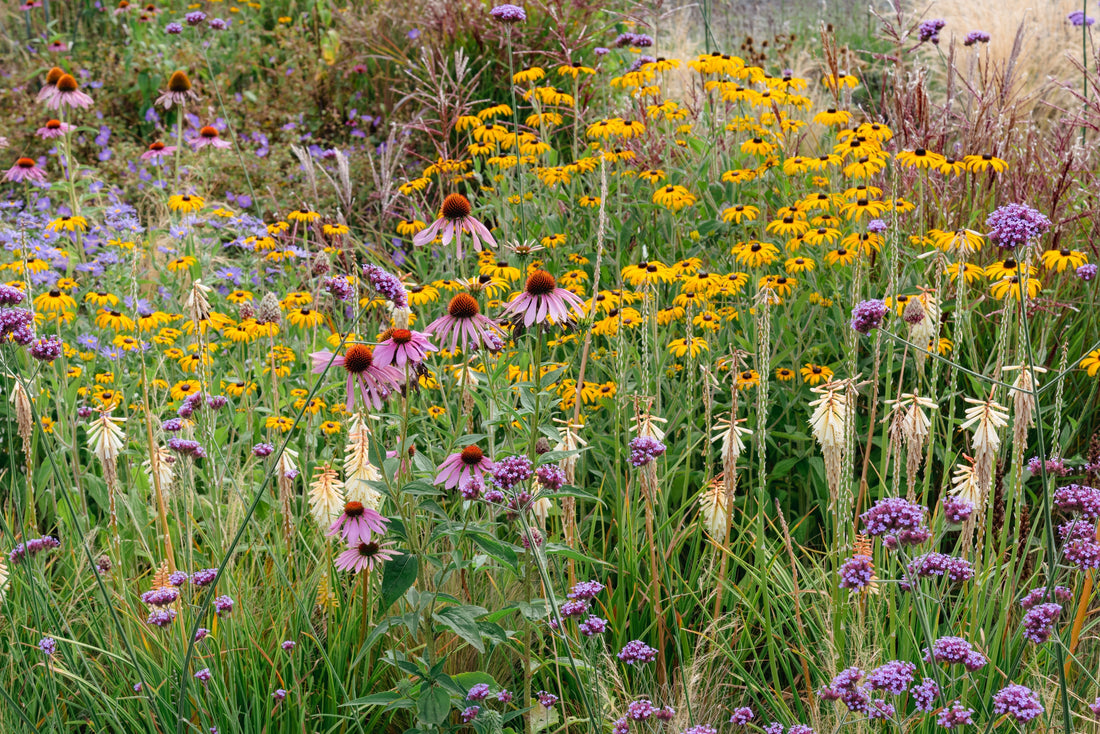
What are native plants?
Milkweed, coneflower, asters, and goldenrod. These are a few of the well-known native plants of Wisconsin. But what exactly makes a plant native? And why does it matter if a plant is native or not?
According to the USDA Forest Service, native plants are “the indigenous terrestrial and aquatic species that have evolved and occur naturally in a particular region, ecosystem, and habitat. Species native to North America are generally recognized as those occurring on the continent prior to European settlement.” (source)
In simpler terms, native plants have lived in a place for thousands of years. They have evolved with other living things in the area, such as insects and birds, and they have adapted to the local climate and soil.
Why do native plants matter?
Native plants are have many benefits. They are critical to the food web, support biodiversity, reduce flooding, sequester carbon, filter pollutants from the soil, and provide a sense of place. On top of all that, they require less maintenance than lawn when properly matched to site conditions and they’re beautiful!
If you only remember one of those benefits, remember biodiversity. It's probably been a while since 4th grade science, but biodiversity is simply the variety of life on Earth. It's what keeps ecosystems alive and provides us with water, pollination, fertile soil, food, and medicine. Unfortunately, biodiversity is declining.
According to the Living Planet Index, global wildlife populations have declined by an average 69% in the past 50 years. We have lost 3 billion birds in North America since 1970. Even common birds like red-winged blackbirds and sparrows are declining.

Insects are declining too. Perhaps the best-known example is the beloved monarch butterfly, down 80% since the 1990s and now a candidate for the endangered list. Another local species in trouble is the rusty patched bumblebee, down 87% since the 1990s and federally endangered. Even if you're not a fan of bugs, this is bad news for us: 1 in 3 bites of food we eat depends on pollinators.

"If insects continue to decline, expect some pretty dire consequences for ecosystems generally - and for people." Dave Goulson, ecologist and author of Silent Earth
Habitat loss drives biodiversity loss
There are many reasons for biodiversity loss, but habitat loss is the biggest one. Habitat is more than just a place to sleep: It's a place that has what a species needs to survive. Good habitat includes things like food for adults and young, water, shelter, nest sites, and even the right temperatures. The average yard doesn't include much habitat. But it could, simply by adding native plants!
Native plants are critical habitat for many species, including birds and insects. Many pollinators have special relationships with certain species of plants. For example, monarchs only lay eggs on milkweed because baby monarchs (caterpillars) only eat milkweed. If you lose the milkweed you lose the monarch.

Monarchs and milkweed are just one example of a specialist relationship.20-45% of native bees are pollen specialists, meaning they can only use pollen from one type of plants. There are 400 species of native bees in Wisconsin. That's a lot of specialist bees hungry for native plants.
Birds are dependent on native plants too. 96% of terrestrial birds feed their nestlings insects. Caterpillars are one of the most important food sources for baby birds. And what do caterpillars eat? Native plants. Adult birds also eat seeds and fruit from many native plants and use plant materials for nests.
Stitching the landscape back together
"The plants and the insects are really the fabric of the planet. We have ripped that fabric into many different pieces and now it's important to try to stitch it back together." --Scott Black, Executive Director of the Xerces Society for Invertebrate Conservation
Adding native plants to one yard may not seem like much. But when you see pollinators on your flowers, you can be assured that your garden made a difference to those insects. And if your native plants inspire a few neighbors, you can create a habitat corridor that allows wildlife to move around and get what they need.
